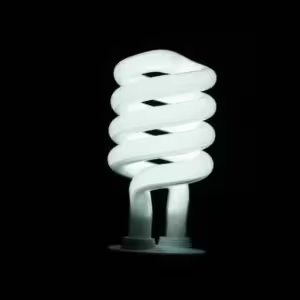Fluorescent Lights:
Why can't you buy them anymore?
Fluorescent Lights are now illegal to Manufacture.
In a significant move towards environmental sustainability, the UK government banned the manufacture of traditional fluorescent lights, including T5 and T8 tubes, starting in September 2023. This decision is part of a broader effort to reduce hazardous waste and promote the use of more energy-efficient lighting solutions.

What are the reasons for the ban?
Environmental Impact
One of the primary reasons for the ban is the environmental impact of fluorescent lights. These lights contain mercury, a toxic substance that can be harmful to both human health and the environment. When fluorescent lights are improperly disposed of, mercury can leach into the soil and water, posing a significant risk to ecosystems and public health.
Energy Efficiency
Fluorescent lights are also less energy-efficient compared to modern alternatives like LED lights. By transitioning to LED lighting, the UK aims to reduce its carbon footprint and save energy. LED lights consume significantly less power and have a longer lifespan, making them a more sustainable choice for both residential and commercial use.
Economic Benefits
The shift to LED lighting is not only beneficial for the environment but also for consumers’ wallets. LED lights are more cost-effective in the long run due to their lower energy consumption and longer lifespan. The government estimates that this transition could save British consumers up to 80% a year on their energy bills.
Regulatory Compliance
The ban aligns with updated regulations aiming to limit the use of hazardous materials in electrical and electronic equipment. By banning the production of fluorescent lights, the UK is taking a step towards promoting safer, more sustainable lighting options.
How does this affect schools?
In September 2023, the UK government made a decisive move to ban the sale of traditional fluorescent lights, including T5 and T8 tubes. This is part of a broader initiative to reduce hazardous waste and promote the use of more energy-efficient lighting solutions and means you will have to buy more energy efficient alternatives from now on.
Impact on students
- Health Issues: Fluorescent lights can cause headaches, eye strain, and migraines due to their flickering nature. This flicker can be too rapid to be consciously noticed but can still cause discomfort and impair visual tasks
- Concentration and Performance: The flickering and poor lighting quality of fluorescent lights can interfere with students’ concentration and performance. Studies have shown that students in classrooms with fluorescent lighting may experience decreased concentration and productivity.
- Mood and Behaviour: Fluorescent lighting can negatively impact students’ mood and behaviour. The cool-white tint of these lights can lead to feelings of discomfort and anxiety, especially after prolonged exposure.
- Sleep Patterns: Fluorescent lights can disrupt students’ natural circadian rhythms eventually leading to sleep problems. Poor sleep can result in attention issues and reduced alertness during the day. LED’s help promote the production of melatonin, a natural sleep hormone.
Impact on academic environment
- Teacher and Staff Well-being: Just like students, teachers and staff can also experience headaches, eye strain, and discomfort from fluorescent lighting. This can affect their ability to perform their duties effectively.
- Overall Productivity: Poor lighting can lead to a decrease in overall productivity in the school environment. Both students and staff may find it harder to focus and complete tasks efficiently under inadequate lighting conditions.
- Energy Efficiency: While fluorescent lights are more energy-efficient than some older lighting options, they are still less efficient compared to modern LED lights. Transitioning to LED lighting can help schools save on energy costs and reduce their environmental impact.
Switching to LED lights can address these issues by providing a more stable and comfortable lighting environment, improving both health and productivity in schools.
Click below to find out more about the best alternative for Fluorescent Lights
Our method has been tested










